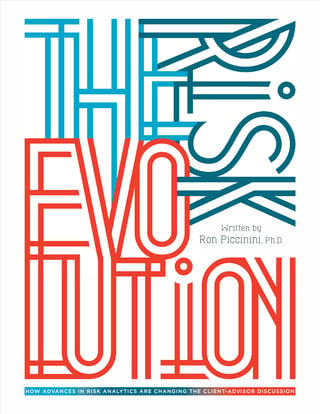 Covisum’s new white paper explains the dangers of relying on traditional models of explaining and estimating portfolio risk, and how risk analytics have evolved, giving you amazing new opportunities to help clients more.
Covisum’s new white paper explains the dangers of relying on traditional models of explaining and estimating portfolio risk, and how risk analytics have evolved, giving you amazing new opportunities to help clients more.
You've seen it happen: losses accumulate in a portfolio, and the client ponders doing something unwise. Whether they're the most risk-averse client or extremely laissez-faire, they're vulnerable to emotional reactions. When they're paying you to help them make smart financial decisions, this leaves you in an unpleasant situation. How do you help people avoid behavioral mistakes that could cost them — and cost you your reputation?
You set proper downside expectations based on quality risk analytics.
Unfortunately, most advisors continue to rely on faulty models to calculate portfolio risk — models that underestimate risk.
Check out our white paper to see how quantitative risk analysis has evolved, largely because advances in technology have made more-sophisticated computing possible and affordable.
The result is that high-quality information, once reserved for only the handful of elite financial institutions that could afford it, is available to all advisors and their clients. This democratization of risk analysis data will revolutionize the financial planning industry - but only for those advisors who evolve with the technology.
In 1952, Harry Markowitz revolutionized the world of investing with the Modern Portfolio Theory. In this framework, investment risk is modeled as the standard deviation of returns, and market returns are assumed to follow a Gaussian distribution, also known as normal distribution or bell curve. Subsequently, and for a very long time, virtually every model of financial returns made the same assumption. According to the Gaussian model, 68% of events happen within one standard deviation, and about 95% of returns happen within two standard deviations. (Technically, it's 1.96 standard deviations, but no client cares about that.) But have you ever thought about how often we should observe returns within three standard deviations? About 99.7%. And within four standard deviations? 99.993%.
And therein lies the problem with the Gaussian assumption. According to this model, we should never witness anything past three to four standard deviations. But we do, and we do often.
According to the Gaussian model, the odds of witnessing the crash of 1987 were so minute they were meaningless — with 54 zeros following the decimal point, technically one day every 100,000 times the age of the known universe. Events such as the collapse of LongTerm Capital Management (LTCM), Lehman Brothers and Bear Stearns should never have happened in the Gaussian world. Yet every single day, some stock price somewhere experiences a sharp decline in the five to 20 standard deviation range.
From an empirical point of view, the Gaussian model is indefensible. Download the full white paper to learn how high quality portfolio risk analysis can serve the needs of advisors and their clients.





